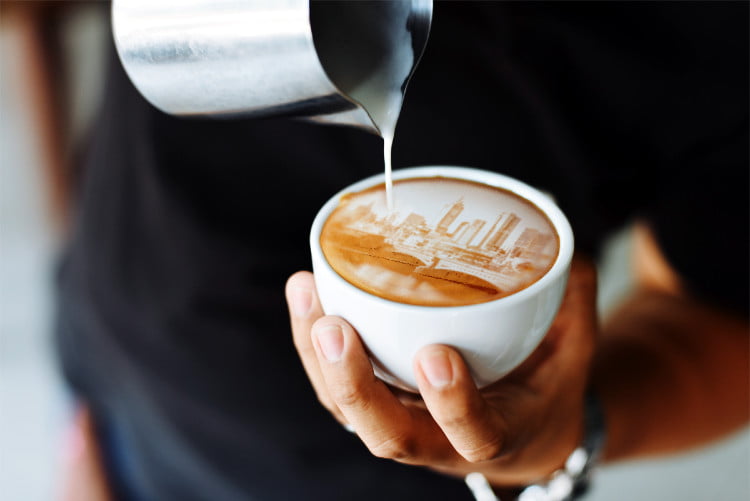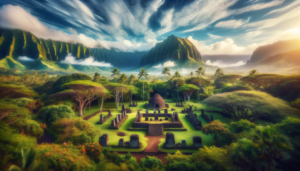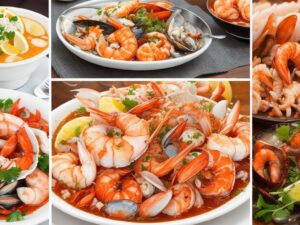Picture yourself surrounded by lush greenery and the invigorating scent of freshly brewed coffee. In this captivating article, we invite you to explore the captivating world of Hawaiian coffee plantations and this flavorful beverage, with a particular focus on the enchanting Big Island and Kauai. Discover the rich legacy behind Hawaii’s coffee industry and indulge in the unique flavors that make Hawaiian coffee truly exceptional. Get ready to embark on a journey that will awaken your senses and leave you yearning for a cup of Hawaiian goodness.
Table of Contents
ToggleHistory of Coffee in Hawaii
Introduction to Coffee in Hawaii
Welcome to the fascinating world of Hawaiian coffee! From its early beginnings to its current revival, the history of coffee in Hawaii is rich with cultural significance and a unique blending of flavors from the Pacific islands. This article will take you on a journey through time, exploring the origins and development of the coffee industry in the beautiful Hawaiian islands.
Early Beginnings of Hawaiian Coffee Plantations
The story of coffee in Hawaii started in the early 19th century when Chief Boki, Governor of Oahu, brought the first coffee plants to the islands from Rio de Janeiro. These plants, however, failed to flourish due to unfavorable growing conditions. It wasn’t until 1825 when Reverend Samuel Ruggles successfully established the first viable coffee plantation in Kona, on the Big Island of Hawaii.
The Rise and Fall of the Hawaiian Coffee Industry
The Hawaiian coffee industry experienced significant growth throughout the late 19th and early 20th centuries. The unique volcanic soil and ideal climatic conditions allowed the coffee plants to thrive, and the reputation of Hawaiian coffee grew tremendously. By the 1890s, coffee had become one of Hawaii’s largest exports, and the industry continued to prosper until the devastating effects of World War II and the introduction of cheaper Brazilian coffee led to a decline in production.
Revival of the Coffee Industry in the 21st Century
In recent years, there has been a resurgence of the Hawaiian coffee industry, driven by a renewed focus on quality and sustainability. Small-scale farmers have revived coffee plantations across the islands, cultivating unique and exceptional beans. Today, Hawaiian coffee is highly sought after, with a reputation for its outstanding flavors and commitment to environmentally conscious practices.
Varieties of Hawaiian Coffee
Kona Coffee
Kona coffee is perhaps the most famous and highly regarded variety of Hawaiian coffee. Grown exclusively in the Kona district on the Big Island, this coffee is known for its smooth and rich flavor profile. The combination of a unique microclimate, rich volcanic soil, and meticulous cultivation and processing methods contribute to the exceptional quality of Kona coffee.
Maui Coffee
On the island of Maui, coffee farmers have established plantations in the fertile slopes of the Haleakala volcano. Maui coffee possesses a distinct flavor characterized by bright acidity and floral notes. The elevation and climate of Maui create the perfect conditions for the cultivation of this exquisite coffee.
Kauai Coffee
Kauai, known as the “Garden Island,” is home to the largest coffee plantation in Hawaii. Kauai coffee is renowned for its well-balanced flavor profile, with notes of chocolate and nuts. The island’s rich volcanic soil and abundant rainfall contribute to the exceptional quality of the coffee grown here.
Oahu Coffee
Oahu, the most populated island in Hawaii, also boasts its own coffee production. While Oahu coffee may not be as well-known as its counterparts on other islands, it is gaining recognition for its unique characteristics. The coffee grown on Oahu exhibits a smooth and mellow flavor with hints of tropical fruit.
Other Notable Hawaiian Coffee Varieties
In addition to the main islands, there are smaller coffee-producing regions throughout Hawaii that produce their own unique and flavorful coffee beans. These regions, including Molokai and Waialua on Oahu, contribute to the diverse range of Hawaiian coffee available to coffee enthusiasts.
The Unique Growing Conditions in Hawaii
Volcanic Soil and High Elevation
One of the key factors contributing to the exceptional quality of Hawaiian coffee is the volcanic soil in which it is grown. The volcanic ash provides an abundance of essential nutrients, resulting in coffee beans with complex flavors and distinct characteristics. Furthermore, the high elevation of the islands creates cooler temperatures, allowing the coffee cherries to ripen slowly and develop their full flavor potential.
Abundant Rainfall and Year-Round Sunshine
Hawaii is blessed with a tropical climate that combines abundant rainfall and year-round sunshine. Coffee plants thrive in these conditions, as they require regular rainfall for optimal growth. The balance between rain and sunshine in Hawaii ensures the coffee cherries mature evenly and develop the desired sweetness and acidity that contribute to the final cup of coffee.
Isolation from Pests and Diseases
The isolation of the Hawaiian islands has played a significant role in protecting the coffee crops from many pests and diseases that threaten coffee production in other regions. Strict regulations and monitoring help maintain the health and quality of Hawaiian coffee, allowing farmers to focus on cultivating exceptional beans without the constant worry of destructive pests.
Sustainable Farming Practices
Hawaiian coffee farmers have embraced sustainable farming practices to ensure the longevity and health of their plantations. Many farmers employ shade-grown methods, which provide a natural habitat for birds and insects that contribute to pest control. Furthermore, organic fertilizers and natural pest control methods are utilized to minimize the environmental impact of coffee production.
Visiting Coffee Plantations in Hawaii
Choosing the Right Coffee Plantation to Visit
When planning a visit to a Hawaiian coffee plantation, it is important to research and choose a plantation that aligns with your interests and values. Some plantations offer educational tours, while others focus on organic and sustainable farming practices. By selecting a plantation that resonates with you, you can fully immerse yourself in the unique experience of coffee farming in Hawaii.
Guided Tours and Tastings
Most coffee plantations in Hawaii offer guided tours that allow visitors to learn about the coffee production process from start to finish. These tours often include a visit to the fields, where you can see the coffee plants up close, as well as the processing facilities and roasting rooms. Tastings are a highlight of these tours, allowing you to savor the unique flavors of Hawaiian coffee.
Learning about the Coffee Production Process
During your visit, the coffee farmers and guides will take you through the various stages of coffee production. From the careful harvesting of ripe cherries to the sorting and processing methods, you will gain a deep understanding of the meticulous craftsmanship that goes into producing each cup of Hawaiian coffee. This firsthand experience is an invaluable opportunity to appreciate the efforts and dedication of the farmers.
Exploring the Surrounding Plantation Landscape
Coffee plantations in Hawaii are often nestled in breathtaking landscapes, offering visitors the chance to explore the natural beauty of the islands. Take a stroll through the lush coffee fields, inhale the enticing aromas, and marvel at the awe-inspiring views. Many plantations also have on-site cafes or picnic areas, allowing you to relax and savor a cup of freshly brewed Hawaiian coffee while surrounded by nature.
The Coffee Harvest and Processing
From Picking Ripe Cherries to Sorting
The coffee harvest in Hawaii typically takes place between September and early December. Skilled laborers selectively pick only the ripest cherries by hand, ensuring that only the highest quality beans make it into the processing stage. These cherries are carefully sorted in order to eliminate any defective or under-ripe beans, ensuring that only the best beans are used in the final product.
Wet and Dry Processing Methods
Hawaiian coffee utilizes both wet and dry processing methods, depending on the variety and desired flavor profile. Wet processing involves removing the outer flesh of the cherry and fermenting the beans in water, which helps to enhance the clean and bright flavors. Dry processing, on the other hand, involves drying the cherries in the sun, resulting in a more full-bodied and robust cup of coffee.
Drying and Milling the Coffee Beans
After the initial processing, the coffee beans require thorough drying to achieve the ideal moisture content. This is usually done through a combination of sun drying and mechanical drying methods. Once dried, the beans are then milled to remove the parchment layer and reveal the green coffee beans, ready for roasting.
Roasting and Packaging
Roasting is a critical step in the coffee production process, as it transforms the green coffee beans into the aromatic and flavorful beans that we are familiar with. Each coffee plantation has its own unique roasting techniques and profiles, resulting in a diverse range of flavors and intensities. Once roasted, the coffee beans are packaged and prepared for distribution, ensuring that the flavors are preserved until they reach your cup.
Tasting Authentic Hawaiian Coffee
Identifying Aromas and Flavors
Tasting Hawaiian coffee is an experience that engages all the senses. Take a moment to savor the aroma of freshly brewed coffee, inhaling the subtle nuances that hint at the flavors to come. When tasting, pay attention to the various flavor notes present in the cup. Hawaiian coffee often boasts a complex flavor profile, with hints of tropical fruit, chocolate, nuts, and floral undertones.
Cupping Techniques
Cupping is the process of evaluating the aroma, taste, and body of coffee in a controlled and standardized manner. Professional coffee cuppers use specific techniques to assess the quality and characteristics of the coffee. While you may not have access to all the cupping tools and equipment, you can still apply some basic techniques to enhance your coffee tasting experience at home.
Grading and Certifications
Hawaiian coffee is subject to rigorous grading standards, ensuring that only the highest quality beans receive the prestigious labels. The Hawaii Department of Agriculture grades coffee based on size, moisture content, defects, and other factors. Additionally, certain regions and plantations may have their own certifications or designations, such as the Kona Coffee Cultural Festival’s Cupping Competition, which recognizes excellence in Kona coffee production.
Pairing Coffee with Local Hawaiian Cuisine
To fully appreciate the flavors of Hawaiian coffee, consider pairing it with local Hawaiian cuisine. The unique flavors of Hawaiian coffee can complement a range of dishes, from tropical fruits and macadamia nuts to freshly caught fish and traditional Hawaiian poi. Experiment with different combinations to enhance your coffee tasting experience and explore the culinary diversity of the islands.
The Economic and Cultural Impact of Coffee in Hawaii
Job Creation and Economic Benefits
The coffee industry in Hawaii plays a vital role in job creation and economic stability. Coffee farming provides employment opportunities for local communities, from harvesting and processing to roasting and distribution. The industry also generates revenue through exports and tourism, contributing to the overall economic prosperity of the islands.
Preservation of Hawaiian Culture
Hawaiian coffee embodies the rich cultural heritage of the islands. By supporting the local coffee industry, you are promoting the preservation of traditional farming methods, cultural practices, and the stories passed down through generations. The coffee plantations themselves often become cultural hubs, hosting events and festivals that celebrate the unique traditions and customs of Hawaii.
Promotion of Sustainable Agriculture
Coffee farming in Hawaii has embraced sustainable agriculture practices, placing a strong emphasis on environmental stewardship and organic farming. By supporting Hawaiian coffee, you are contributing to the promotion of sustainable agriculture, which fosters a healthier ecosystem and reduces the negative impact on the environment.
Community Support and Fair Trade Practices
Many coffee plantations in Hawaii are deeply rooted in the local communities. From participating in educational programs to providing support for community initiatives, the coffee industry plays an active role in fostering strong community ties. Additionally, some coffee farms adhere to fair trade practices, ensuring that farmers receive fair wages, and supporting initiatives that uplift the lives of workers and their families.
Coffee Festivals and Events in Hawaii
Kona Coffee Cultural Festival
The Kona Coffee Cultural Festival is one of the most anticipated events in Hawaii’s coffee industry. Held annually in November, this festival celebrates the rich history and cultural significance of Kona coffee. Visitors can enjoy art exhibits, live music, coffee tastings, and educational programs, immersing themselves in the vibrant atmosphere of the festival.
Hawaii Coffee Association’s Annual Conference
The Hawaii Coffee Association’s Annual Conference is a gathering of industry professionals, coffee farmers, and enthusiasts from around the world. The conference provides a platform for knowledge sharing, networking, and exploring the latest trends and advancements in the world of Hawaiian coffee. Attendees have the opportunity to attend workshops, panel discussions, and participate in cupping competitions.
Hawaii Coffee and Chocolate Festival
Indulge in the decadent combination of coffee and chocolate at the Hawaii Coffee and Chocolate Festival. This festival showcases the best of both worlds, featuring tastings, workshops, and demonstrations by local coffee and chocolate artisans. It is a celebration of the flavors and craftsmanship that make Hawaiian coffee and chocolate truly exceptional.
Other Celebrations of Hawaiian Coffee
Throughout the year, various events and celebrations take place across the islands, highlighting the diversity and excellence of Hawaiian coffee. These events range from local coffee farm open houses to regional coffee competitions, bringing together coffee enthusiasts and showcasing the unique flavors and talents of Hawaii’s coffee industry.
Where to Buy Hawaiian Coffee
Local Coffee Shops and Cafés
Supporting local coffee shops and cafés is a great way to taste and discover a wide range of Hawaiian coffee varieties. Many coffee shops roast their own beans or source directly from local coffee farms, ensuring freshness and a diverse selection for their customers. Take the opportunity to speak with knowledgeable baristas who can recommend different coffee profiles and brewing methods.
Online Coffee Retailers
If you are unable to visit Hawaii in person, online coffee retailers offer a convenient way to have Hawaiian coffee delivered directly to your door. These retailers often work closely with coffee farmers and offer a wide selection of Hawaiian coffee varieties, allowing you to explore the flavors and characteristics of the different regions and farms from the comfort of your own home.
Farmers’ Markets and Craft Fairs
For a truly authentic experience, visit local farmers’ markets and craft fairs where Hawaiian coffee farmers and vendors gather to showcase their products. These venues provide an opportunity to meet the farmers face-to-face, ask questions, and taste samples of their coffee. Not only will you be supporting local producers, but you will also be able to directly connect with the people who have dedicated their lives to cultivating exceptional Hawaiian coffee.
Directly from Coffee Plantations
If you have the opportunity to visit Hawaii, make sure to visit coffee plantations directly. Many plantations have on-site stores or offer online purchasing options, allowing you to bring home freshly roasted coffee directly from the source. By purchasing directly from the coffee plantations, you can be assured of the quality and authenticity of the Hawaiian coffee you are purchasing.
Bringing the Taste of Hawaii Home
Selecting the Right Beans and Roasts
When selecting Hawaiian coffee to enjoy at home, consider the variety and roast level that suits your taste preferences. Experiment with different varieties, such as Kona, Maui, and Kauai, to explore the unique flavors and characteristics of each. Additionally, pay attention to the roast level, as lighter roasts tend to emphasize the delicate flavors, while darker roasts offer a fuller-bodied and more pronounced profile.
Proper Storage and Brewing Methods
To preserve the flavors and quality of your Hawaiian coffee, ensure proper storage. Keep your coffee in an airtight container in a cool, dark place, away from moisture and sunlight. When it comes to brewing, consider the brewing method that best suits your preference. Whether it’s a French press, pour-over, or espresso machine, different brewing techniques can accentuate the flavors of Hawaiian coffee in different ways.
Creating Hawaiian-Inspired Coffee Drinks
Bring a taste of Hawaii into your daily routine by creating Hawaiian-inspired coffee drinks. Add a splash of coconut milk or macadamia nut syrup for a tropical twist, or try a traditional Hawaiian iced coffee, chilled with a dash of sweet cream. Get creative and experiment with flavors and ingredients that showcase the unique characteristics of Hawaiian coffee.
Sharing the Aloha Spirit through Coffee
Hawaiian coffee embodies the spirit of aloha – a warm and welcoming attitude towards others. Share the experience of Hawaiian coffee with friends and loved ones, introducing them to the flavors and stories behind each cup. Whether it’s hosting a coffee tasting party or giving the gift of Hawaiian coffee, spread the aloha spirit and create memorable moments through the enjoyment of this exceptional beverage.
In conclusion, exploring the world of Hawaiian coffee is a journey that encompasses history, culture, and the pursuit of exceptional flavors. From the early beginnings of coffee plantations in Hawaii to the resurgence of the industry in the 21st century, the legacy of Hawaiian coffee is intertwined with the unique growing conditions and the dedication of the coffee farmers. Whether visiting the coffee plantations, tasting the flavors, or supporting the local economy, every cup of Hawaiian coffee allows you to experience the rich heritage and flavors of the islands. Let the spirit of aloha guide you as you embark on this coffee adventure, and may each sip transport you to the breathtaking landscapes and vibrant culture of Hawaii.





